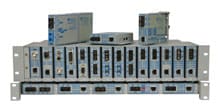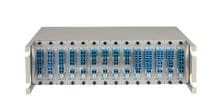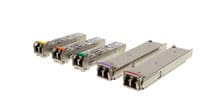- Products
- PoE Media Converters and Switches
- Ethernet & PoE Switches Product Selector
- Multi-Gigabit Ethernet and PoE Switches
- PoE PSE Commercial Switches
- PoE PSE Industrial Fiber Switches
- PoE Industrial Copper Extenders
- PoE Powered Media Converters
- PoE PSE Media Converters
- PoE Extenders & Injectors Product Selector
- Pluggable Transceivers Product Selector
- Product Lines
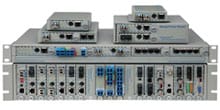
- iConverter Managed Multi-service Platform
- Copper to Fiber Media Converters
- Ethernet Media Converters
- 10 Gigabit Copper-to-Fiber
- 10/100/1000 Copper to 10 Gigabit Fiber
- 10/100/1000 Copper-to-Fiber with Integrated Management
- 10/100/1000 Industrial Copper-to-Fiber with Integrated Management
- 10/100/1000 Copper-to-Fiber with VLAN
- 10/100/1000 Dual Media Converter with VLAN
- Gigabit Copper-to-Fiber
- 10/100 Copper-to-Fiber with Integrated Management
- 10/100 Industrial Copper-to-Fiber with Integrated Management
- 10/100 Copper-to-Fiber with VLAN
- 10/100 Copper-to-Fiber
- Fast Ethernet Copper-to-Fiber
- Fast Ethernet Redundant Links
- 10Mbps Copper-to-Fiber
- 10Mbps Copper to Coax
- TDM Media Converters
- Serial Media Converters
- Ethernet Media Converters
- Fiber to Fiber Media Converters
- 10 Gigabit Fiber-to-Fiber Converter and Transponder
- 10 Gigabit Industrial Converter and Transponder
- SFP-to-SFP Fiber Converter and Transponder
- SFP-to-SFP Industrial Fiber Converter and Transponder
- Gigabit Fiber to-Fiber with 3 Rs
- 100/1000 Fiber-to-Fiber with 3 Rs
- Gigabit Fiber-to-Fiber
- Fast Ethernet Fiber-to-Fiber with 3 Rs
- Fast Ethernet Fiber-to-Fiber
- OC-3/STM-1 Fiber-to-Fiber
- OC-12/STM-4 Fiber-to-Fiber
- Carrier Ethernet Network Interface Devices
- CE 2.0 - 10G Demarcation NID
- CE 2.0 - 10G Demarcation and Aggregation NID
- CE 2.0 - 10/100/1000 Mult-port NID
- CE 2.0 - 10/100/1000 Mult-port NID with PoE
- CE 2.0 - 10/100/1000 8-Port NID
- SFP NID - Gigabit SFP NID
- microNID - 100/1000 compact NID
- CE 1.0 Service OAM - 10/100/1000 NID
- CE 1.0 Link OAM - 10/100/1000 Copper-to-Fiber NID
- CE 1.0 Link OAM - 10/100 Copper-to-Fiber NID
- CE 1.0 Link OAM - Gigabit Fiber-to-Fiber NID
- CE 1.0 Link OAM - Fast Ethernet Fiber-to-Fiber NID
- CWDM Multiplexers
- T1/E1 Multiplexers
- Ethernet Switch Modules
- Management System
- Chassis Options

- 1-Module Industrial Chassis
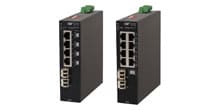
- RuggedNet Industrial Switches and Extenders
- Industrial PoE PSE Fiber Switches
- Multi-Gigabit Managed Industrial PoE+/BT Switches
- Multi-Gigabit Unmanaged Industrial PoE+/BT Switches
- 10G Managed 802.3bt PoE Switches
- 10G Unmanaged 802.3bt PoE Switches
- 10G Managed PoE+ Switches
- 10G Unmanaged PoE+ Switches
- 1G Managed PoE+ Switches
- 1G Unmanaged PoE+ Switches
- 1G Unmanaged 802.3bt PoE Switches
- 1G Managed 802.3bt PoE Switches
- Industrial Ethernet Switches
- Industrial PoE Copper Extenders
- Industrial Power Supplies

- OmniConverter Media Converter, Switches and Extenders
- PoE PSE Media Converters
- 10G Multi-Gigabit / Multi-Rate PoE Media Converter
- 10G Multi-Gigabit / Multi-Rate Media Converter
- 10/100 Multi-port PoE+ Media Converter
- 10/100 PoE+ Media Converter
- 10/100/1000 Multi-Port PoE+ Media Converter
- Industrial 10/100/1000 Multi-Port PoE+ Media Converter
- 10/100/1000 PoE+ Media Converter
- 10/100/1000 PoE++ 60W-100W Media Converter
- Industrial 10/100 Multi-port PoE+ Media Converter
- 1U Rack-Mount Shelf
- PoE PSE Compact Switches
- Multi-Gigabit Managed PoE+/BT Switches
- Multi-Gigabit Unmanaged PoE+/BT Switches
- 10G Managed 802.3bt PoE Switches
- 10G Unmanaged 802.3bt PoE Switches
- 10G Managed PoE+ Switches
- 10G Unmanaged PoE+ Switches
- 1G Managed PoE+ Switches
- 1G Unmanaged PoE+ Switches
- 1G Managed 802.3bt PoE Switches
- 1G Unmanaged 802.3bt PoE Switches
- Ethernet Switches
- PoE Copper Extenders
- Single Pair Ethernet Converters
- PoE Injectors
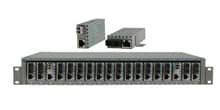
- miConverter Unmanaged Miniature Media Converters
- 10/100/1000 Copper-to-Fiber
- Industrial 10/100/1000 Copper-to-Fiber
- 10/100/1000 Ultra-Compact Copper-to-Fiber
- Gigabit Copper-to-Fiber
- 10/100/1000 Copper-to-Fiber PoE Powered
- 10/100 Copper-to-Fiber
- 10/100 Ultra-Compact Copper-to-Fiber
- 10/100 Copper-to-Fiber PoE Powered
- 18-Module Chassis
- Industrial 10/100 Copper-to-Fiber PoE Powered
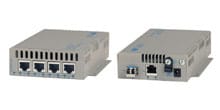
- FlexSwitch Compact Switches
- Solutions
- Company
- Support
- How to Buy
Network Maintenance Tips for Ensuring Uptime and Reliability

A healthy network is the backbone of any successful organization. Downtime due to network issues can disrupt operations, cost you money, and frustrate users. Here at Omnitron Systems, we understand the importance of network uptime and reliability. In this blog, we'll share some key network maintenance tips to keep your network running smoothly:
1. Proactive Monitoring is Key
Don't wait for problems to arise before taking action. Implement network monitoring tools to identify potential issues early on. These tools can track network performance metrics like bandwidth usage, packet loss, and device errors. Early detection allows you to address problems before they snowball into outages.
2. Regular Software Updates
Network devices, like switches and routers, often require firmware and software updates. These updates typically include bug fixes, security patches, and performance enhancements. Regularly installing these updates ensures optimal network performance and mitigates security vulnerabilities.
3. Schedule Preventative Maintenance
Just like any other equipment, network devices require regular maintenance. This may involve cleaning dust buildup from vents, checking cable connections for wear and tear, and verifying proper device configuration. Scheduling preventative maintenance helps prevent unexpected failures and extends the lifespan of your network equipment.
4. Leverage Automation
Automation can significantly enhance network maintenance by reducing manual tasks and increasing efficiency. Consider automating tasks like routine backups, configuration changes, and security scans. This lowers the human error possibility and frees up IT personnel time for more complex tasks.
5. Backup and Recovery Plans
No network maintenance plan is complete without a robust backup and recovery strategy. Establish a regular backup schedule that includes daily, weekly, and monthly backups. Ensure that both onsite and offsite backups are maintained.
Testing Recovery Procedures
Test your recovery processes frequently to make sure accurate and timely data restoration is possible. Document the recovery process and ensure all team members are familiar with it.
6. Performance Optimization
Optimizing network performance involves fine-tuning your network to ensure it operates at peak efficiency. This can involve various activities, from load balancing to optimizing network paths.
Load Balancing
To distribute traffic throughout your network equally, use load balancing. This prevents any single device from becoming a bottleneck and improves overall performance.
Network Path Optimization
Optimize network paths to reduce latency and improve data transfer speeds. Use network performance tools to identify and address any issues.
7. User Education and Awareness
Empowering users with basic network hygiene practices can go a long way. Train users to use secure passwords, recognize and report suspicious activity, and stay away from dangerous connections. This helps mitigate the risk of user-related security breaches that can disrupt network operations.
8. Document Everything
Maintaining proper network documentation is crucial for efficient troubleshooting and maintenance. Document your network configuration, device connectivity diagrams, and maintenance procedures. This information proves invaluable for new IT staff or when troubleshooting complex network issues.
FAQs
1. How often should I update network device software?
Software update frequency varies based on device type and manufacturer recommendations. Generally, it's advisable to install critical security patches as soon as they become available. For non-critical updates, a regular schedule (e.g., monthly or quarterly) can be established.
2. What are some signs that my network needs maintenance?
Slow network performance, frequent connection drops, and difficulty accessing resources are all indicators that your network might require maintenance. Additionally, if your network devices are overheating or making unusual noises, it's a good idea to schedule a checkup.
3. Can I perform network maintenance myself?
Basic maintenance tasks like checking cable connections and restarting devices can be done by anyone. However, more complex tasks like configuration changes and security audits are best left to IT professionals to avoid accidentally causing network instability.
4. What are the benefits of partnering with a network maintenance provider?
Network maintenance providers offer expertise, resources, and proactive monitoring to ensure optimal network health. They may assist you in creating a maintenance schedule, spotting possible problems early on and resolving them, and freeing up your IT team to work on other important duties.
Omnitron: Your Partner in Network Reliability
Maintaining a network requires a proactive approach and a comprehensive plan. By following these network maintenance tips and partnering with Omnitron Systems, you can ensure your network delivers the uptime and reliability your organization needs. Regular monitoring, updates, training, and backup plans are just a few of the key elements that contribute to network uptime and reliability. Implement these strategies, and you'll be well on your way to a robust and resilient network.
Contact Omnitron Systems today to discuss your specific networking needs and explore how our solutions can help you achieve optimal network performance. Call us now!

